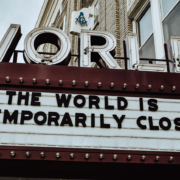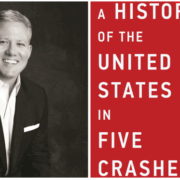The Price of Promise
If we believe the headlines, an artificial intelligence revolution is upon us. The companies at the forefront of AI adoption are growing at extraordinary rates, and investors can’t seem to get enough. From hardware to software, companies that court AI consistently enjoy a higher valuation than their counterparts.
Look no further than Nvidia, the most valuable company of the “Magnificent Seven.” Investors are now paying 40 times next year’s projected earnings to own a piece of it. The other six tech giants trail slightly behind at 35 times earnings. Money is flowing into AI hedge funds like water through a broken dam. To offer a more extreme example, a 23-year-old with zero professional money-management experience recently raised $1.5 billion for his new hedge fund … simply by promising to buy AI-related stocks according to an article by Fortune.
For investors who experienced the dot-com boom, the vibe sure feels similar. Speculation is everywhere. Meme stocks are hyped. Gold is hitting new highs. Cryptocurrencies with no intrinsic value, that produce nothing, regularly surge and retreat from levels unimaginable a decade ago. Will these assets ever demonstrate “real” value to match their prices? Only time will tell.
Remember what human nature loves most: the chase. Deep in our psyche, we love buying whatever has already skyrocketed in price, often incorrectly assuming it’ll appreciate even higher. This feels safe and smart — like winning. But as history shows, it rarely ends well.
Meanwhile, as others chase shiny objects, Warren Buffett does what he’s always done: dig for value. Right now, Berkshire Hathaway is sitting quietly on a mountain of cash, about $340 billion. At the ripe young age of 95, Buffett still waits for worthwhile investment opportunities. He is no stranger to sifting for value and waiting for the right moment. At the start of the financial collapse in 2008, as the big banks were on life support, Buffett made a large investment in Goldman Sachs. Goldman, like many financial firms, faced liquidity pressures, a weakened confidence environment, and an urgent need to shore up its capital base.
Then Buffett stepped in to purchase about $5 billion of the company’s stock. This signaled that while the problems were real, the market may have overreacted. Those at Berkshire believed the company’s price had fallen below its long-term intrinsic value, creating a rare opportunity. This was vintage Buffett — buying quality businesses at moments of peak pessimism. Could troubles get worse before getting better? Absolutely. Buffett’s purchase didn’t mean he was calling a bottom. But Buffett has long expressed a belief that in times of crisis, sound businesses with strong management and franchises could be worthy of backing, even if valuations are under pressure.
He recognized something most investors don’t: value.
This lesson is simple to understand but difficult to internalize: Price and value often move in opposite directions. When a stock becomes wildly popular, its price often rises far above its true value. When fear takes over, the price often falls well below its value.
Human nature, however, urges us to do the exact wrong thing. We rush to buy when prices soar, and we panic-sell when prices plummet.
Buffett encourages investors to do the opposite: “Buy when others are fearful and sell when others are greedy.” It’s the investing equivalent of running into a burning building while everyone else flees. Now, that doesn’t mean all burning buildings ultimately make good investments. Sometimes downward pressure on stock prices is justified. The key is to understand what you’re invested in and why, and to remember that prices fluctuate for a million different reasons. Sometimes those fluctuations are warranted; other times they just reflect emotional reactions.
Chasing what’s hot will always seem tempting. Right now, it’s AI. Twenty years ago, it was dot-com stocks. Before that, it was Japanese real estate, or gold, or tulip bulbs. The specifics change, but the story stays the same. Long-term success is driven by consistency and longevity. You don’t need to hit it out of the park — but to keep stacking little wins for a long time.
Buying into distress feels awful in the moment. It requires courage, patience and discipline. By contrast, buying what’s already risen spectacularly may feel exhilarating, but it almost always leads to disappointment over time.
Buffett’s history is a gentle reminder, perhaps one of his last, of a timeless truth. AI stocks or crypto tokens might offer up big promises, and time will tell if they deliver. But a strong, durable business temporarily out of favor still holds value.
After nearly 50 years of advising and managing clients’ assets, I’ve learned that the great investors don’t follow the herd. They lead by doing the opposite. Warren Buffett has been, and continues to be, an inspiration for so many investors (myself included). So, as you reflect on your portfolio, remember that true wealth isn’t built by chasing the latest craze, but instead by patiently buying into value when others can’t or won’t. Remember, the crowd is almost always wrong at the extremes. And the hardest thing to do often brings the greatest rewards.
Steve Booren is the Owner and Founder of Prosperion Financial Advisors, located in Greenwood Village, Colo. He is the author of Blind Spots: The Mental Mistakes Investors Make and Intelligent Investing: Your Guide to a Growing Retirement Income and a regular columnist in The Denver Post. He was recently named a Barron’s Top Financial Advisor and recognized as a Forbes Top Wealth Advisor in Colorado.










